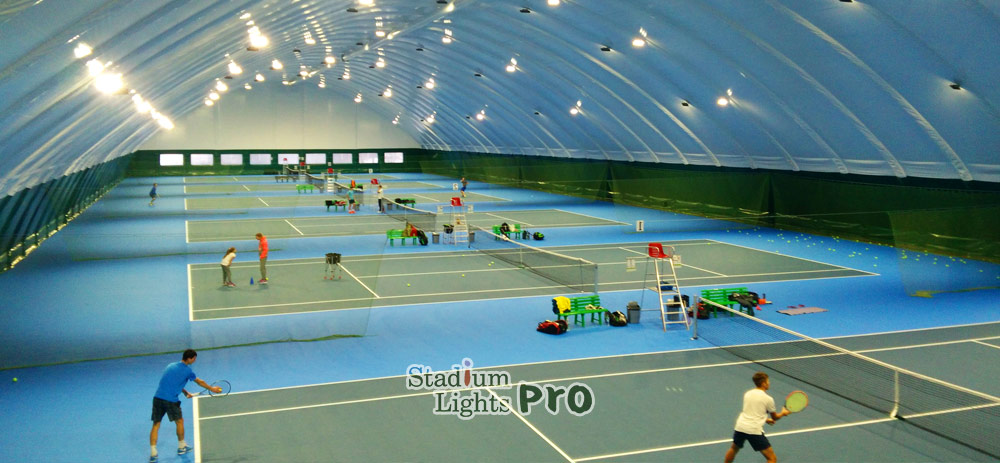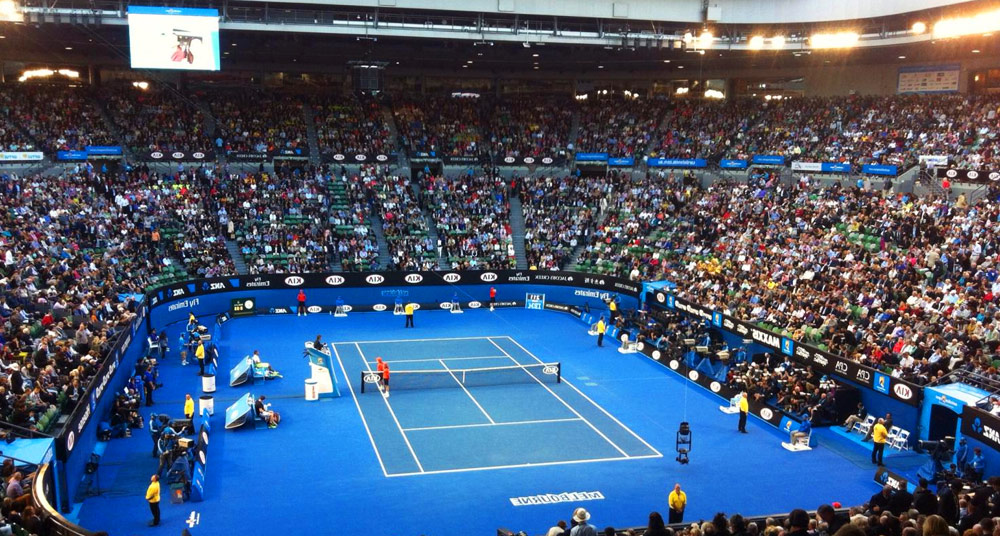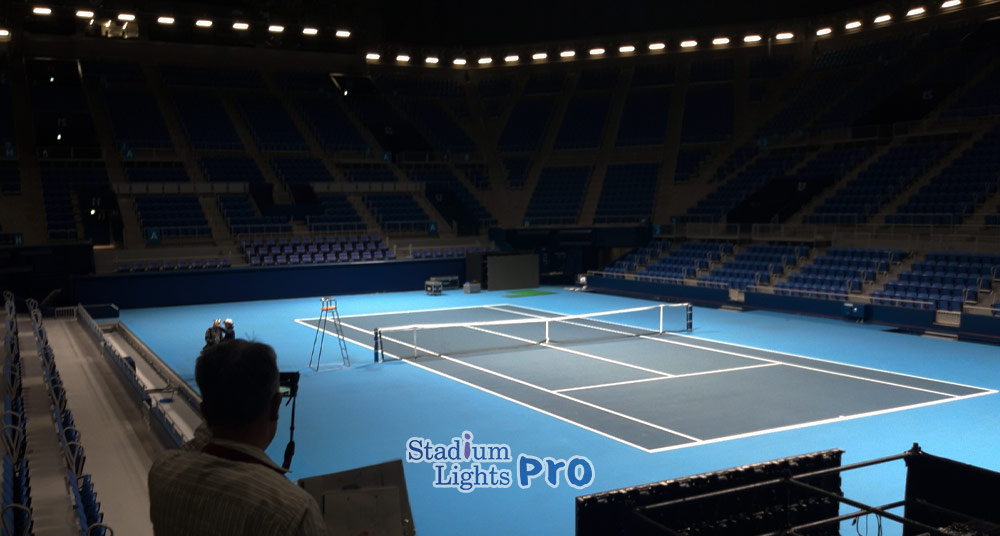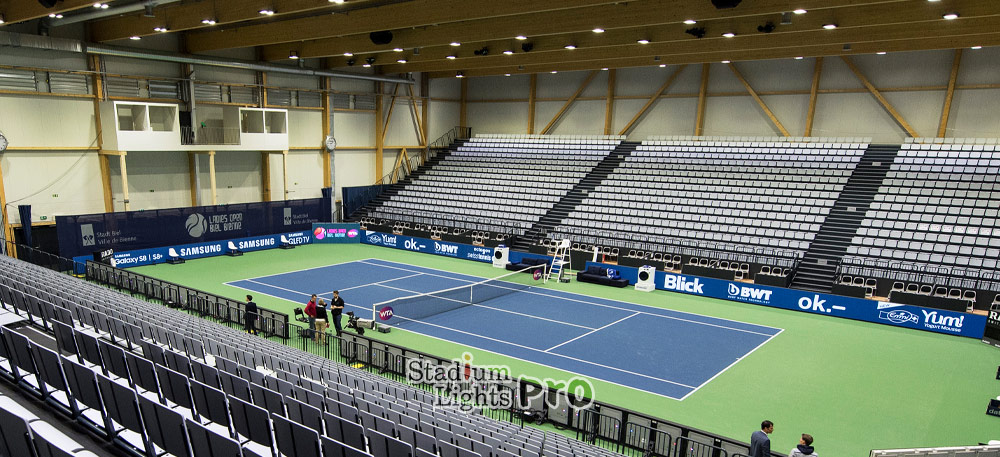Tennis court lighting is essential for ensuring that players have a safe and enjoyable experience on the court. Proper lighting not only helps players see the ball and their opponents more clearly, but it can also enhance the overall aesthetic of the court. However, designing and laying out a lighting system for a tennis court can be a complex process.
In this article, we will provide an overview of the key considerations and factors involved in designing and laying out a tennis court lighting system, as well as some tips and strategies for optimizing the lighting performance of your court. Whether you are building a new tennis court or upgrading an existing one, this guide will help you create a lighting system that meets the needs of your players and enhances the overall experience of the game.
Table of Contents
ToggleTennis Court Lighting Design & Layout
Determine the purpose and location of the tennis court

The purpose and location of the tennis court will have a significant impact on the design and layout of the lighting system. Here are a few key considerations to keep in mind when determining the purpose and location of the tennis court:
Intended use
Is the tennis court being built for recreational play or competitive tournaments? Different levels of play may require different lighting levels and configurations.
Recommended reading: A Guide to Class I, II, and III Tennis Court Lighting
Size and shape of the court
The size and shape of the court will affect the number and placement of the lighting fixtures. A larger court will require more fixtures to provide adequate lighting, while a smaller court may need fewer fixtures.
Orientation of the court
The orientation of the court, particularly the direction it faces, will also impact the lighting design. A court that faces east or west may require more lighting due to the changing angle of the sun throughout the day, while a court that faces north may require less lighting.
Surrounding environment
The surrounding environment, including the presence of trees, buildings, and other structures, can also affect the lighting design. It may be necessary to take these factors into account when determining the placement and orientation of the lighting fixtures.
Determine the required lighting levels for the tennis court

The required lighting levels will depend on the intended use of the court and the level of play. Here are a few guidelines to consider when determining the required lighting levels for a tennis court:
Recreational play
For recreational play, a minimum lighting level of 200 to 300 lux (a unit of illumination) is generally recommended. This is sufficient for casual play and allows players to see the ball and their opponents clearly.
Competitive play
For competitive play, such as tournaments or high-level matches, a lighting level of 500 lux or higher is generally recommended. This level of lighting is necessary to ensure that players can see the ball and their opponents clearly, even during fast-paced play.
International Tennis Federation (ITF) standards
The ITF has established guidelines for the required lighting levels for different levels of play. These guidelines recommend a minimum lighting level of 500 lux for international tournaments, 750 lux for television broadcasts, and 1000 lux for high-definition television broadcasts.
Select the appropriate lighting fixtures
Type of fixtures
There are several types of lighting fixtures that can be used for tennis courts, including floodlights and high-intensity discharge (HID) lamps. Floodlights are a popular choice due to their wide beam angle and ability to provide even lighting across the court surface. HID lamps, such as metal halide or high-pressure sodium lamps, are also commonly used for tennis court lighting due to their high luminous efficiency and long lifespan.
Durability
We can adopt the fixtures that are durable and can withstand the elements. Tennis courts are exposed to a wide range of weather conditions, including wind, rain, and extreme temperatures, so the fixtures should be able to withstand these conditions.
Energy efficiency
Energy-efficient fixtures can help reduce energy costs and minimize the environmental impact of the lighting system. Consider choosing fixtures with high energy efficiency ratings and low power consumption to save on energy costs and reduce the carbon footprint of the lighting system.
Beam angle
The beam angle of a lighting fixture is the angle at which the light is distributed from the fixture. It is typically measured in degrees and refers to the width of the beam of light that is emitted from the fixture.
The beam angle of a lighting fixture determines the spread of light and the coverage area of the fixture. A wider beam angle will provide more coverage and a more even distribution of light, while a narrower beam angle will provide less coverage but may be more focused and intense.
When selecting lighting fixtures for a tennis court, it is generally recommended to choose fixtures with a wide beam angle to ensure that the entire court surface is evenly lit. A beam angle of 120 degrees or more is typically sufficient for tennis court lighting.
Color temperature
Color temperature can affect the appearance of the court surface and the visibility of the ball and players.
Generally, it is recommended to choose fixtures with a color temperature of around 4000-5000 K for tennis court lighting. This range is considered to be “cool white” and provides good visibility and contrast, making it easier for players to see the ball and their opponents.
Waterproof fixture
A waterproof lighting fixture is a fixture that is designed to withstand exposure to water and moisture. Waterproof fixtures are typically used in outdoor environments, such as on a tennis court, where the fixtures may be exposed to rain, snow, or other forms of precipitation.
Waterproof fixtures are essential for tennis court lighting because they help ensure that the lighting system remains operational and effective, even in wet conditions. Waterproof fixtures are also less prone to corrosion and other forms of wear and tear, which can help extend their lifespan and reduce maintenance costs.
There are several types of waterproof fixtures available, including fixtures that are sealed to prevent water from entering and fixtures that are designed to be submerged in water.
Anti-glare
Anti-glare lighting fixtures are fixtures that are designed to minimize or eliminate the glare or reflection of light that can cause visual discomfort or distraction. Glare can be caused by the brightness or intensity of a light source, as well as by the reflection of light off of shiny or reflective surfaces.
Anti-glare lighting fixtures help ensure that players have optimal visibility and are not distracted by glare or reflections. This can help improve the overall experience of the game and reduce the risk of injury.
There are several ways to design lighting fixtures to reduce glare, including using fixtures with low-glare optics, shielding the fixtures to direct the light onto the court and not into the eyes of the players, and using fixtures with a lower intensity or brightness.
Lighting uniformity

Light uniformity is the measure of how evenly the light is distributed across the surface of the tennis court. A lighting system with good light uniformity will provide even and consistent lighting across the entire court surface, while a system with poor light uniformity may have areas that are too bright or too dim.
Good light uniformity is vital for tennis court lighting because it helps ensure that players have optimal visibility and are able to see the ball and their opponents clearly. It also helps enhance the overall aesthetic of the court and improve the overall experience of the game.
There are several factors that can impact light uniformity, including the type and placement of the lighting fixtures, the intensity and color temperature of the light, and any obstacles or obstructions that may block or redirect the light.
Determine the number and placement of the tennis lighting fixtures
Size and shape of the court
The size and shape of the court will affect the number of fixtures needed to provide adequate lighting. A larger court will require more fixtures to provide even lighting across the entire surface, while a smaller court may need fewer fixtures.
Placement of fixtures
In general, fixtures should be placed along the edges of the court and pointed towards the center to provide even lighting across the entire surface. It may be necessary to adjust the placement of the fixtures to account for any obstacles or obstructions on the court.
Light uniformity
It is essential to ensure that the lighting fixtures are placed in a way that provides good light uniformity across the court surface. This can help ensure that players have optimal visibility and that the court has an even and consistent appearance.
Consider the placement of poles and mounting heights
When designing and laying out a tennis court lighting system, it is necessary to consider the placement of the poles and the mounting heights of the fixtures. Here are a few factors to keep in mind when determining the placement of poles and mounting heights:
Pole placement
The placement of the poles will affect the distribution of light on the court and the overall appearance of the lighting system. It is generally recommended to place the poles along the edges of the court and at the corners, as this will help provide even lighting across the entire surface.
Mounting height
The mounting height of the fixtures will also impact the distribution of light on the court. Higher mounting heights will generally provide more coverage and a more even distribution of light, while lower mounting heights may be more focused and intense but may also create more shadows.
Court dimensions
The dimensions of the court, including the height of the net and the height of the surrounding fence or walls, will also impact the placement of poles and the mounting heights of the fixtures.
Choose a control system for the lighting

A control system is a system that allows the user to control and manage the lighting, including turning the lights on and off, adjusting the brightness, and setting schedules or timers.
There are several types tennis court lighting control systems, including manual control systems, automated control systems, and remote control systems. Here are a few factors to consider when choosing a control system:
Manual control systems
Manual control systems allow the user to manually control the lighting, typically using switches or other simple controls. Manual control systems are simple and easy to use, but may not offer the same level of flexibility and convenience as automated or remote control systems.
Automated control systems
Automated control systems use sensors or timers to automatically adjust the lighting based on predetermined conditions or schedules. Automated control systems can provide a higher level of convenience and efficiency, but may be more complex to install and set up.
Remote control systems
Remote control systems allow the user to control the lighting remotely, typically using a smartphone or other device. Remote control systems can provide a high level of flexibility and convenience, but may require additional hardware or infrastructure to function.
Consider energy efficiency and cost
Here are a few ways to enhance the energy efficiency and cost-effectiveness of the lighting system:
Choose energy-efficient fixtures
Energy-efficient lighting fixtures can help reduce energy consumption and lower energy costs. Consider choosing fixtures with high energy efficiency ratings and low power consumption to save on energy costs and reduce the carbon footprint of the lighting system.
Use controls to optimize energy use
Using controls, such as timers or occupancy sensors, can help optimize energy use by turning the lights on and off or adjusting the brightness as needed. This can help reduce energy consumption and lower energy costs.
Use natural lighting
Consider incorporating natural lighting into the design of the tennis court, such as by using skylights or reflective surfaces, to supplement or replace artificial lighting. This can help reduce energy consumption and lower energy costs.
Ensure that the tennis court lighting design meets all local codes and regulations
Building codes
Building codes establish the minimum standards for the design, construction, and maintenance of buildings and structures, including lighting systems. It is essential to consult with local building codes to ensure that the lighting system meets the required standards.
Electrical codes
Electrical codes establish the minimum standards for the installation and maintenance of electrical systems, including lighting systems. It is necessary to consult with local electrical codes to ensure that the lighting system is installed and maintained in a safe and compliant manner.
Lighting levels
Local codes and regulations may also specify the required lighting levels for tennis courts, based on factors such as the size of the court and the intended use of the court. We need to ensure that the lighting system meets the required lighting levels to ensure optimal visibility and safety for the players.
Install and test the tennis lighting system
After designing and laying out the tennis court lighting system, the next step is to install and test the system to ensure that it is functioning properly. Here are a few steps to follow when installing and testing the lighting system:
Gather the necessary tools and materials: Make sure you have all the necessary tools and materials, including fixtures, poles, wiring, and any other components needed for the installation.
Follow the design plan
Follow the design plan and any manufacturer’s instructions carefully to ensure that the system is installed correctly and safely.
Install the fixtures
Mount the fixtures on the poles according to the design plan, and connect the fixtures to the electrical supply.
Test the lighting
Turn on the lighting and test the system to ensure that it is functioning properly. Make any necessary adjustments or repairs as needed.
Perform routine maintenance
Regularly check and maintain the lighting system to ensure that it is functioning properly and safely. This may include tasks such as cleaning the fixtures, replacing bulbs, and checking for any signs of damage or wear and tear.
Maintain the lighting system
Regularly check and clean the fixtures
Dust and dirt can accumulate on the fixtures over time, which can affect the performance of the lighting. Regularly clean the fixtures to remove dust and dirt and ensure that the lighting is functioning optimally.
Replace bulbs as needed
Bulbs can burn out or become damaged over time, which can affect the performance of the lighting. Replace bulbs as needed to ensure that the lighting is functioning properly.
Check for damage or wear and tear
Regularly inspect the lighting system for any signs of damage or wear and tear, such as broken fixtures or damaged wiring. Repair or replace any damaged components as needed to ensure the safety and effectiveness of the lighting system.
Follow manufacturer’s instructions
Follow the manufacturer’s instructions for maintaining the lighting system, including any recommended cleaning and maintenance procedures.
Monitor and adjust the lighting as needed
Observe the lighting during use
Regularly observe the lighting during use to identify any areas that may be too bright or too dim, or any other issues that may affect the performance of the lighting.
Use controls to adjust the lighting
Use the controls of the lighting system, such as timers or dimmers, to adjust the lighting as needed. This can help optimize the lighting and ensure that it meets the needs of the players and the overall goals of the lighting system.
Monitor energy usage
Regularly monitor the energy usage of the lighting system to identify any opportunities for energy savings or improvements in efficiency.
Make necessary adjustments
Make any necessary adjustments to the lighting system, such as replacing bulbs or repositioning fixtures, to ensure that it is functioning properly and effectively.
Consider additional features and amenities
There are several additional features and amenities that can be incorporated into the design and layout of a tennis court lighting system to enhance the overall experience of the game. Here are a few examples:
LED lighting
LED lighting can provide a number of benefits for tennis court lighting, including energy efficiency, long lifespan, and low maintenance. LED fixtures are also highly durable and resistant to shock and vibration, making them well-suited for use on tennis courts.
Wireless control
Wireless control systems allow the user to control the lighting remotely, typically using a smartphone or other device. This can provide a high level of flexibility and convenience, and may be particularly useful for managing the lighting at multiple courts or at large facilities.
Adjustable lighting
Adjustable lighting systems allow the user to adjust the intensity and direction of the lighting as needed, providing greater control and customization of the lighting. Adjustable lighting systems may be particularly useful for facilities that host multiple sports or events and need to adjust the lighting to meet the specific needs of each activity.
Court surface reflectance
The surface reflectance of the court can also impact the effectiveness of the lighting. Consider choosing a surface with a high reflectance to enhance the lighting and improve visibility for the players.
Consult with a sports lighting specialist or professional engineer as needed
Consulting with a sports lighting specialist or professional engineer can be a helpful resource when designing and laying out a tennis court lighting system. These professionals can provide expert advice and guidance on the specific requirements and considerations of sports lighting, and can help ensure that the lighting system meets the needs of the players and the overall goals of the lighting system.
Here are a few benefits of consulting with a sports lighting specialist or professional engineer:
Expert knowledge
Sports lighting specialists and professional engineers have extensive knowledge and experience in the design and installation of sports lighting systems. They can provide valuable insights and recommendations on the specific requirements and considerations of sports lighting.
Compliance with codes and regulations
Sports lighting specialists and professional engineers are familiar with local codes and regulations related to sports lighting, and can ensure that the lighting system meets all necessary requirements.
Customized design
A sports lighting specialist or professional engineer can work with you to develop a customized design for the lighting system that meets the specific needs and goals of the facility and the players.
Professional installation
A sports lighting specialist or professional engineer can provide professional installation services to ensure that the lighting system is installed safely and correctly.
Consider the impact of the lighting on the surrounding area
Light pollution
Lighting that is too bright or improperly designed can create light pollution, which can affect the visibility of the night sky and impact the quality of life for people living or working in the area. Consider choosing fixtures with appropriate beam angles and color temperatures to minimize light pollution.
Glare
Glare from the lighting can be a nuisance for people living or working in the area, and can also affect the visibility of the players on the court. Consider choosing fixtures with anti-glare features or using shields or other measures to minimize glare.
Shadows
Shadows created by the lighting can affect the visibility of the players on the court and impact the overall quality of the game. Consider the placement and mounting heights of the fixtures to minimize shadows and ensure good light uniformity and coverage.
Consider the overall cost of the lighting system of tennis court
The overall cost of the lighting system for a tennis court can vary significantly depending on a number of factors, including the size and complexity of the system, the type and number of fixtures, the control system, and the cost of installation and maintenance.
Here are a few tips for managing the overall cost of the lighting system:
Choose energy-efficient fixtures
Energy-efficient fixtures can help reduce energy consumption and lower energy costs over time. Consider choosing fixtures with high energy efficiency ratings and low power consumption to save on energy costs and reduce the carbon footprint of the lighting system.
Use controls to optimize energy use
Using controls, such as timers or occupancy sensors, can help optimize energy use by turning the lights on and off or adjusting the brightness as needed. This can help reduce energy consumption and lower energy costs.
Incorporate natural lighting
Consider incorporating natural lighting into the design of the tennis court, such as by using skylights or reflective surfaces, to supplement or replace artificial lighting. This can help reduce energy consumption and lower energy costs.
Shop around
Compare prices and options from multiple vendors to ensure that you are getting the best value for your money.
Conclusion
Designing and laying out a tennis court lighting system requires careful consideration of a number of factors, including the purpose and location of the court, the required lighting levels, the type and placement of fixtures, the control system, energy efficiency and cost, and the needs and preferences of the users. By following these guidelines and consulting with a sports lighting specialist or professional engineer as needed, it is possible to create a lighting system that meets the specific needs of the players and the overall goals of the lighting system. Regular maintenance and monitoring can help ensure that the lighting system remains operational and effective over time.
If you are considering installing a new lighting system for your tennis court and would like some guidance, we encourage you to reach out to us for a free design consultation. Our team of sports lighting experts and professional engineers have a wealth of experience in designing and installing lighting systems for a range of sports facilities, and we would be happy to help you create a lighting system that meets the needs and goals of your specific facility. Please don’t hesitate to contact us to schedule your consultation and learn more about how we can help turn your vision for a tennis court lighting system into a reality.

